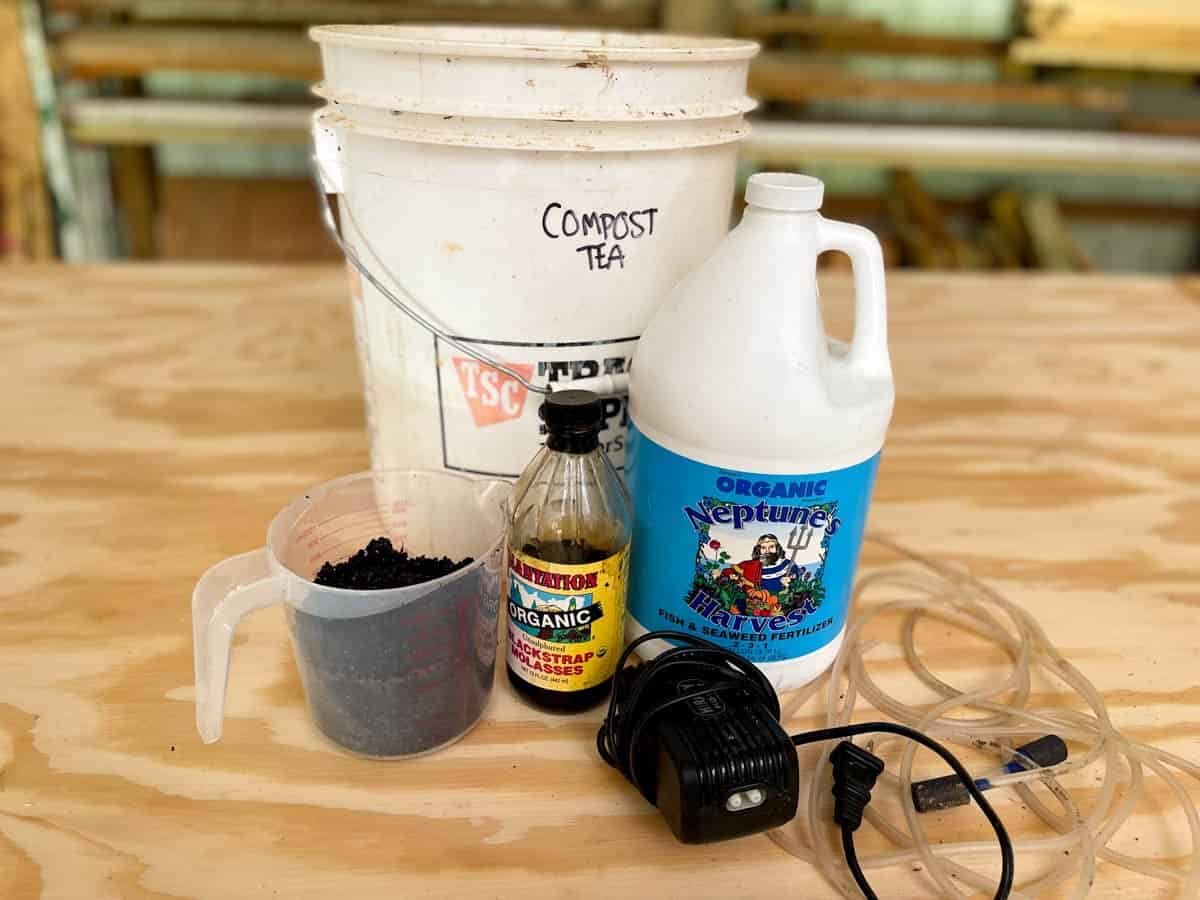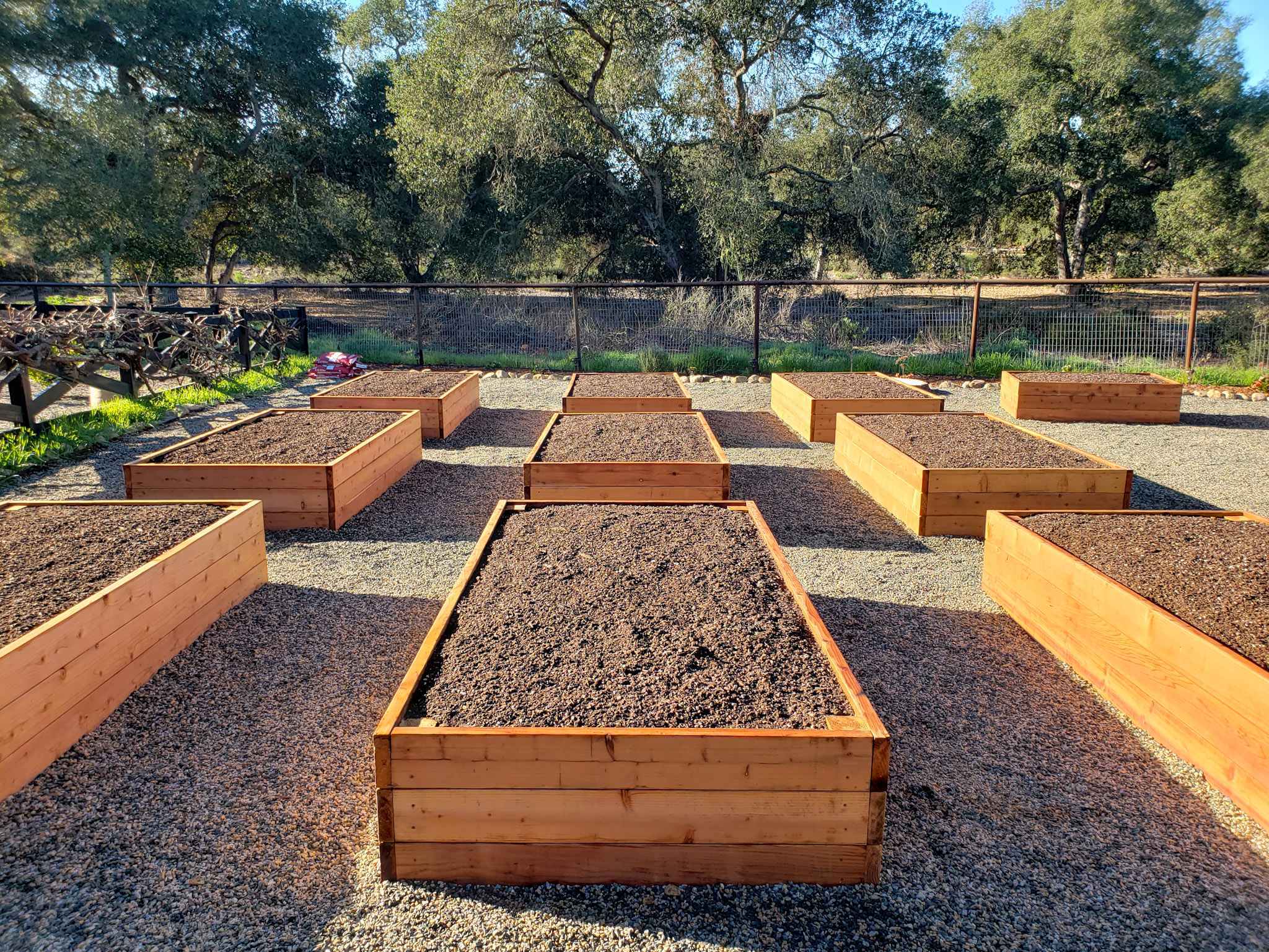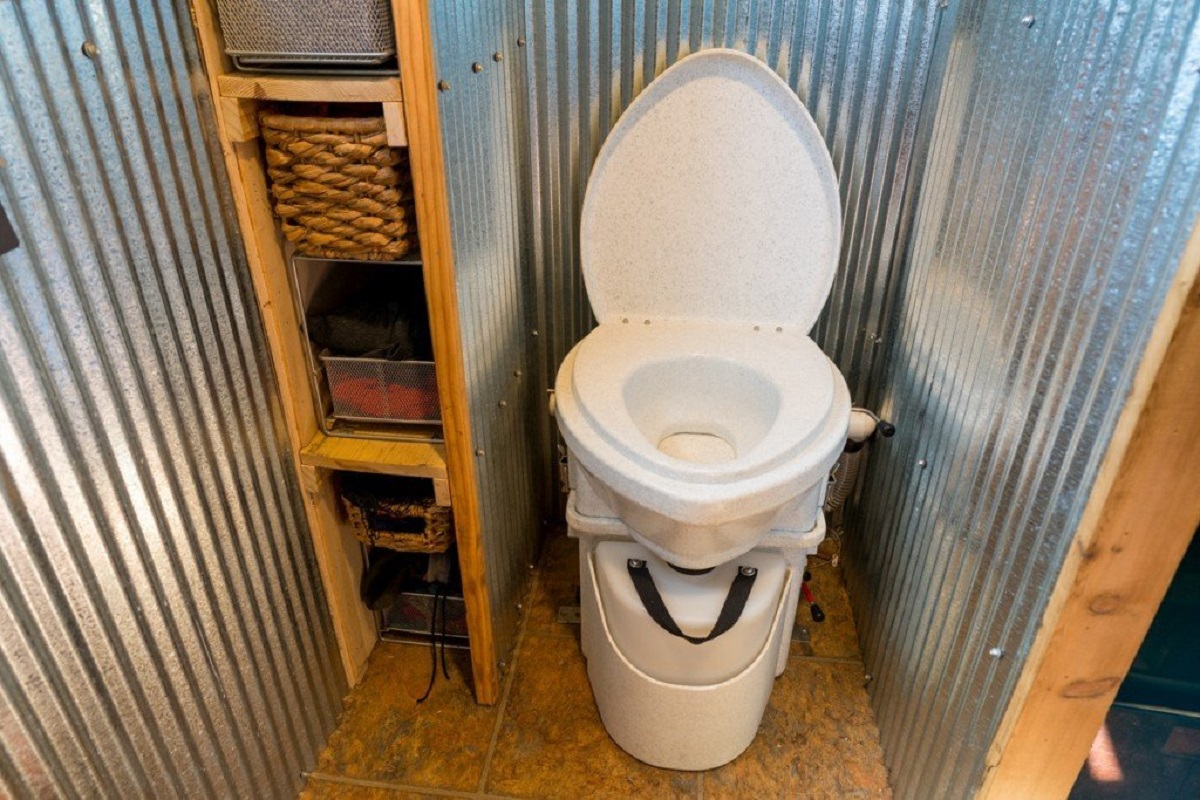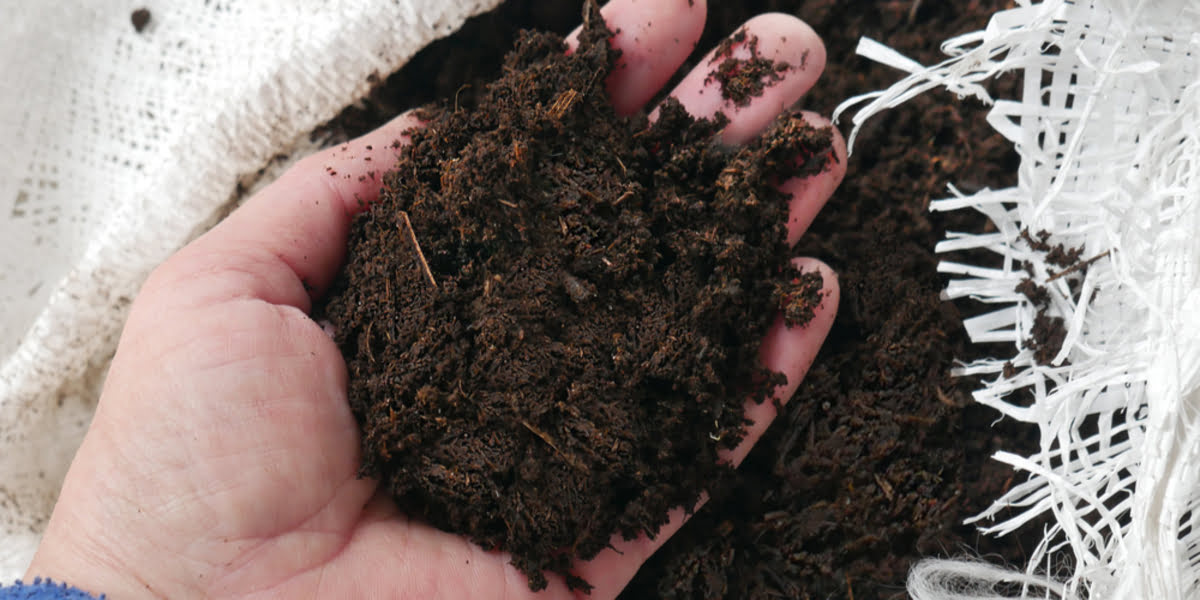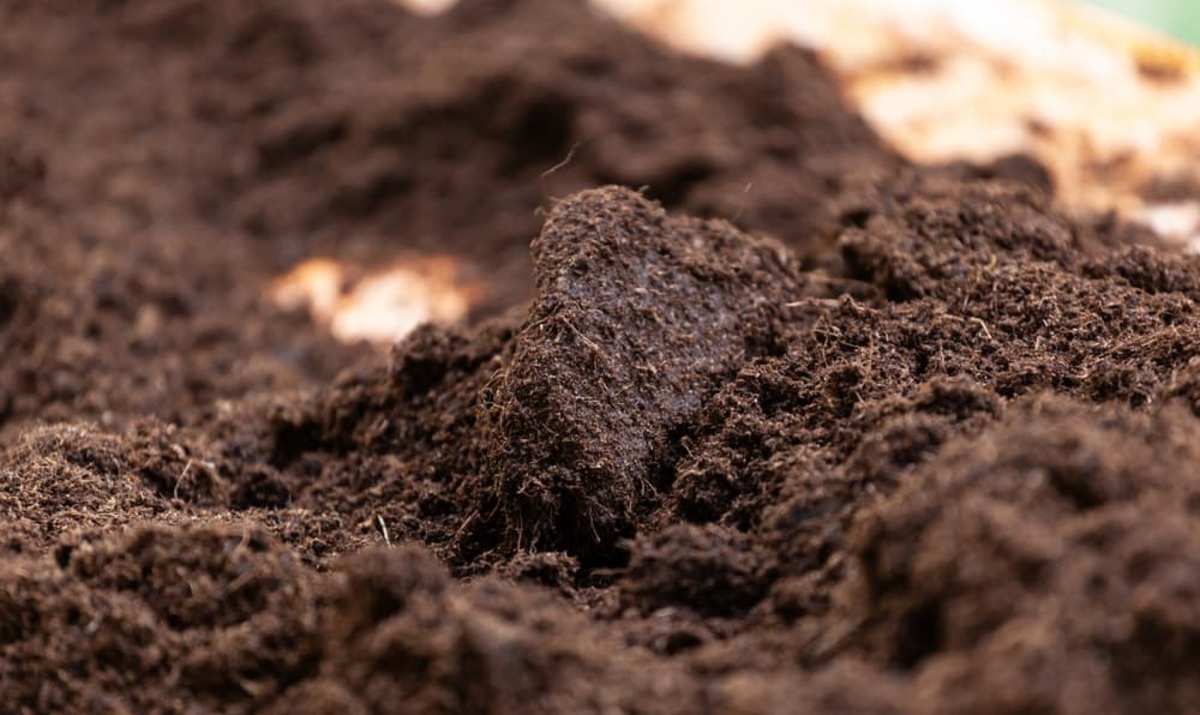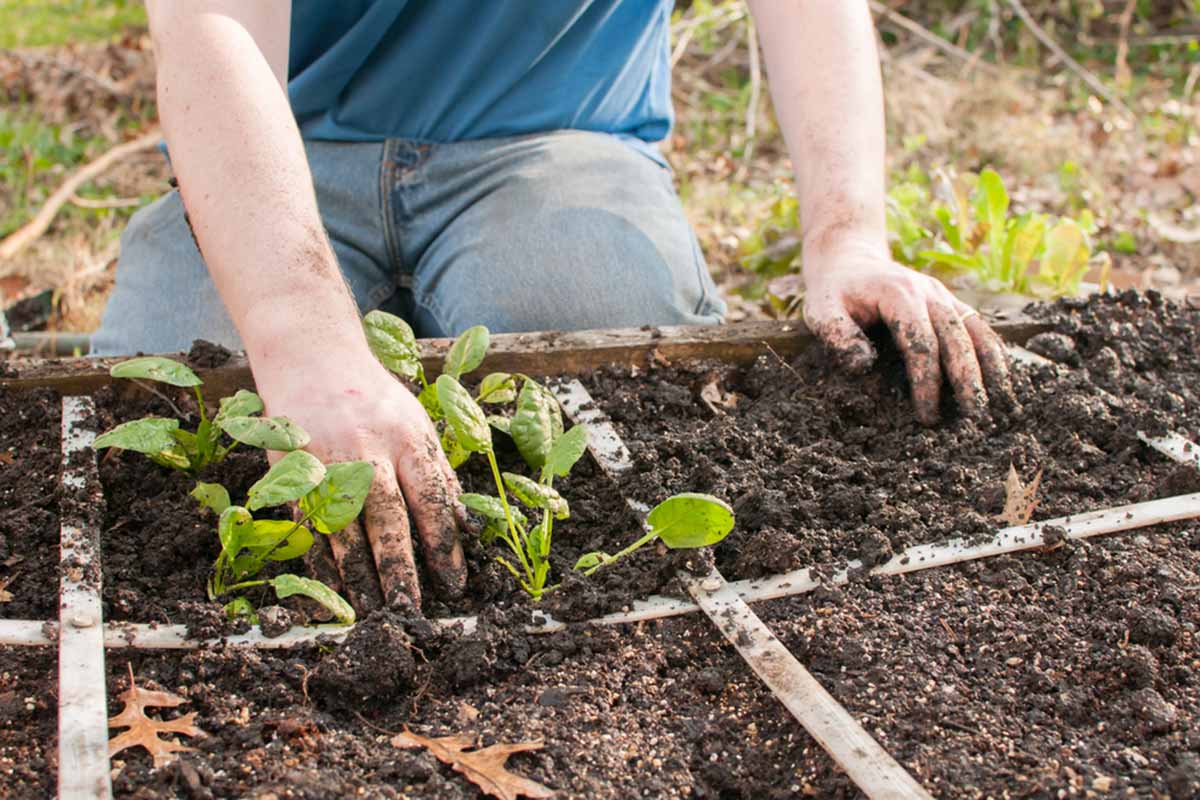Home>Gardening Basics>How Much Is A Yard Of Compost
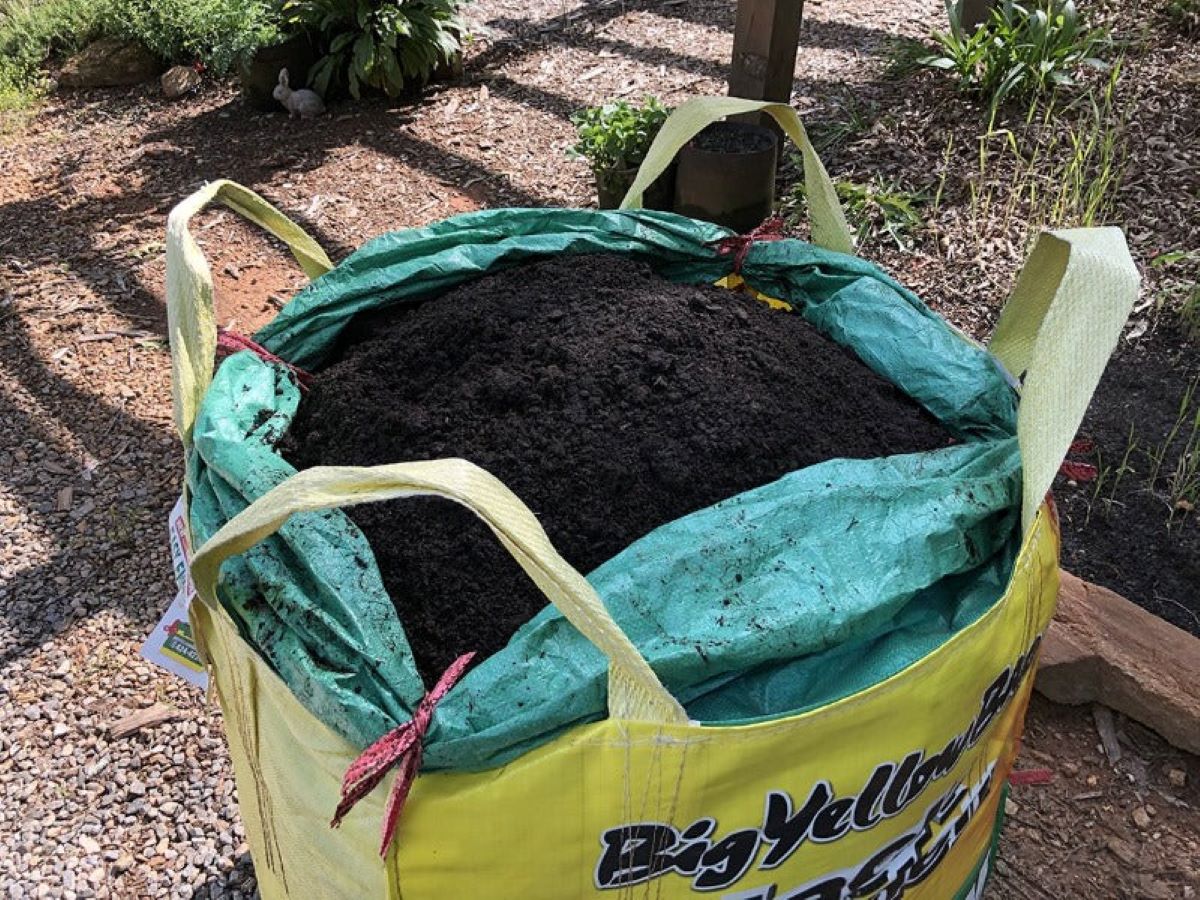

Gardening Basics
How Much Is A Yard Of Compost
Modified: January 22, 2024
Discover the cost of a yard of compost and learn how to get started with your composting journey.
(Many of the links in this article redirect to a specific reviewed product. Your purchase of these products through affiliate links helps to generate commission for Chicagolandgardening.com, at no extra cost. Learn more)
Table of Contents
- Introduction
- What is compost?
- Yard of compost: Definition and measurement
- How much does a yard of compost weigh?
- How much does a yard of compost cost?
- Factors that affect the cost of a yard of compost
- Tips for purchasing and using a yard of compost
- Benefits of using compost in gardening and landscaping
- Conclusion
Introduction
Compost is an essential component for gardeners and landscapers. It acts as a natural fertilizer and soil amendment, enriching the soil with vital nutrients and improving its structure. Many people opt to use compost instead of chemical fertilizers due to its numerous benefits, including promoting plant growth, enhancing soil fertility, retaining moisture, and reducing the need for synthetic additives. If you’re planning to start a gardening or landscaping project, understanding the concept and measurement of a yard of compost is crucial.
Compost is the result of the decomposition of organic materials, such as kitchen scraps, yard waste, and plant matter. These materials are broken down by microorganisms over time, creating a nutrient-rich substance that aids in plant growth. Compost is environmentally friendly and offers a sustainable way to improve soil quality. It not only reduces the amount of organic waste that ends up in landfills but also helps to limit the use of synthetic chemicals in gardening and landscaping.
When it comes to the measurement of compost, a commonly used term is “yard of compost.” A yard is a standard unit of measurement for bulk materials, equivalent to 27 cubic feet or about three feet high, three feet wide, and three feet deep. This measurement is important when purchasing compost as it ensures that you have enough quantity to meet your gardening or landscaping needs.
The weight of a yard of compost can vary depending on factors such as moisture content and the type of materials used in the composting process. On average, a yard of compost weighs around 1,000 to 1,200 pounds. Understanding the weight is crucial, especially if you need to transport the compost or if weight restrictions apply in your location.
The cost of a yard of compost can also vary depending on several factors. These factors can include the quality of the compost, the supplier, your location, and whether it’s organic or commercially produced. It’s important to research and compare prices to ensure you get the best value for your money.
In this article, we will explore in more detail the measurement, weight, and cost of a yard of compost. We’ll also discuss the factors that affect the cost and provide tips for purchasing and using compost effectively. By the end of this article, you’ll have a comprehensive understanding of the importance of compost in gardening and landscaping, as well as how to make informed decisions when it comes to acquiring and utilizing a yard of compost.
What is compost?
Compost is a dark, crumbly substance that is created through the process of composting. It is made from the decomposition of organic materials, such as fruit and vegetable scraps, yard trimmings, leaves, and other plant matter. Composting is a natural biological process where microorganisms, including bacteria, fungi, and worms, break down these organic materials into a nutrient-rich soil amendment.
Compost is often referred to as “black gold” because of its immense benefits for soil health and plant growth. It acts as a natural fertilizer, providing essential nutrients like nitrogen, phosphorus, and potassium to plants. These nutrients are released slowly and can be readily absorbed by plants, ensuring steady growth and development. Compost also improves the soil’s structure by increasing its water retention capacity and promoting better drainage.
In addition to its nutrient content, compost helps to balance soil pH levels, making it more suitable for a wide range of plants. It enhances microbial activity in the soil, creating a favorable environment for beneficial bacteria and fungi that aid in decomposition and disease suppression. Compost also acts as a natural pest repellent, deterring certain insects and pests from damaging plants.
One of the significant advantages of compost is its ability to improve soil fertility and enhance overall garden and landscape health. By adding compost to your soil, you can increase its organic matter content, which in turn improves its structure, moisture-holding capacity, and nutrient availability. This results in healthier plants, increased yields, and reduced reliance on chemical fertilizers and pesticides.
Compost is not only beneficial for garden beds and vegetable patches but can also be used in flower beds, container gardening, and landscaping projects. It can be mixed into the soil before planting or applied as a top dressing. Compost can even be used as a component in potting mixes to provide essential nutrients and improve moisture retention for potted plants.
Overall, composting is a sustainable and environmentally friendly practice that reduces organic waste and promotes healthy soil and plant growth. Whether you’re an avid gardener or a professional landscaper, incorporating compost into your gardening routine is a wise decision. It not only supports the health of your plants but also contributes to the well-being of the planet by reducing waste and minimizing the use of synthetic chemicals.
Yard of compost: Definition and measurement
A yard of compost is a standard unit of measurement used to quantify the amount of compost you require for your gardening or landscaping needs. It refers to a volume of compost that measures 27 cubic feet. This measurement is based on a cubic yard, which is three feet in height, three feet in width, and three feet in depth.
Why is the measurement of a yard of compost important? When planning a gardening or landscaping project, it’s crucial to have an idea of how much compost you’ll need to ensure you have enough to cover the desired area adequately. Knowing the quantity in a yard allows you to accurately calculate the amount of compost required and helps you avoid overordering or falling short of the necessary amount.
Measuring compost in yards is particularly helpful for purchasing bulk compost. Many suppliers sell compost in bulk, measured in cubic yards, which can be more cost-effective than buying individual bags. By determining how many cubic yards you need, you can make a more informed purchasing decision and potentially save money on larger compost orders.
Calculating the volume in yards can be simplified by breaking down the area you want to cover into basic geometric shapes. For example, if you’re working with a rectangular garden bed, you can measure the length, width, and depth, and then calculate the volume in cubic feet using the formula: length x width x depth. To convert cubic feet to yards, divide the total volume by 27.
For irregularly shaped areas, you can estimate the volume by dividing the space into smaller sections of basic shapes and calculating the volume of each section individually. Add up the volumes of each section to determine the total volume in cubic feet, and then convert it to yards using the division factor of 27.
It’s important to note that the measurement of a yard of compost refers to its volume and not its weight. While 1 cubic yard of compost will always occupy the same amount of space, the weight of the compost can vary depending on factors such as moisture content and the specific materials used in the composting process.
In the next section, we will explore the weight of a yard of compost and how it can vary depending on different factors.
How much does a yard of compost weigh?
The weight of a yard of compost can vary depending on several factors, including moisture content and the specific materials used in the composting process. On average, a yard of compost weighs around 1,000 to 1,200 pounds.
Moisture content plays a significant role in determining the weight of compost. Compost with higher moisture levels will weigh more than compost with lower moisture levels. This is important to consider, especially if you need to transport the compost or if weight restrictions apply in your area. Wet compost can be significantly heavier, making it more challenging to handle and transport.
The type and composition of materials used in the composting process can also influence the weight of the final product. Compost made from dense materials, such as wood chips and nut shells, will generally weigh more than compost made from lighter materials like leaves and grass clippings. Be aware of the specific ingredients used in the compost you’re purchasing or producing, as it can affect the weight and overall quality of the compost.
Furthermore, it is essential to consider the weight capacity of your gardening equipment, such as wheelbarrows or garden carts, when handling a yard of compost. It’s always a good idea to check the weight restrictions and ensure that your equipment can safely handle the amount of compost you intend to transport or distribute.
If you’re purchasing compost, the weight may not be the primary concern, as suppliers generally sell compost by volume (in cubic yards) rather than by weight. However, it can be helpful to have an estimate of the weight, especially if you’re calculating the delivery cost or comparing prices between suppliers.
To determine the weight of a yard of compost more accurately, you can inquire with the supplier or producer for the specific weight range of their compost. This can give you a better idea of the weight you can expect and help you plan accordingly.
Remember, the weight of a yard of compost is a dynamic factor, and it can vary based on the factors mentioned above. By understanding the weight range of compost and considering the specific needs of your gardening or landscaping project, you can ensure that you have the appropriate amount of compost for your requirements.
How much does a yard of compost cost?
The cost of a yard of compost can vary depending on several factors, including the quality of the compost, the supplier, your location, and whether it’s organic or commercially produced. It’s essential to research and compare prices to ensure you get the best value for your money.
The price range for a yard of compost typically falls between $20 and $60, but it can vary significantly depending on your specific circumstances. Organic compost tends to be more expensive than commercially produced compost due to the additional effort and resources required for organic certification. However, there are often additional benefits associated with using organic compost, such as being free from synthetic pesticides and herbicides.
When comparing prices, it’s important to consider the quality of the compost and the specific needs of your gardening or landscaping project. Cheaper compost might be appealing due to its lower cost, but it may not have the same nutrient content or microbial activity as higher-quality compost. It’s worth investing in compost that has been properly processed and is rich in organic matter and beneficial microorganisms.
Another factor that can influence the cost of a yard of compost is the supplier. Local suppliers may offer more competitive prices compared to those located further away. Consider researching local compost suppliers and comparing their prices and product quality. It’s also a good idea to check customer reviews and testimonials to ensure you’re dealing with a reputable supplier that can provide high-quality compost.
In addition to the base cost per yard of compost, you should also factor in any additional expenses, such as delivery fees. Delivery fees can vary depending on the distance and quantity of compost being transported. Some suppliers offer free delivery within a certain radius, while others may charge a flat fee or calculate it based on mileage.
It’s worth noting that bulk purchases of compost are often more cost-effective than buying individual bags. Many suppliers offer discounts for larger quantities, such as buying multiple yards of compost at once. This can be advantageous if you have a large gardening or landscaping project or if you want to stock up on compost for future use.
Budgeting and planning ahead are key when it comes to the cost of a yard of compost. Consider your project’s needs, the quality of compost desired, and factor in any additional expenses to calculate an accurate budget. By doing thorough research, comparing prices, and considering the long-term benefits of using high-quality compost, you can make an informed decision and ensure that you get the best value for your investment.
Factors that affect the cost of a yard of compost
Several factors can influence the cost of a yard of compost. Understanding these factors can help you make informed decisions when it comes to purchasing compost for your gardening or landscaping needs.
1. Quality of the compost: Compost quality can vary based on the materials used, the composting process applied, and the level of organic matter and nutrients present. Higher-quality compost, which has been properly processed and contains rich organic matter, beneficial microorganisms, and balanced nutrient content, is likely to be more expensive compared to lower-quality compost.
2. Organic or commercial production: Organic compost, which is produced without the use of synthetic chemicals or pesticides, is typically more expensive than commercially produced compost. The additional effort and resources required for organic certification contribute to the higher cost. However, organic compost may offer additional benefits for organic gardening practices and environmental sustainability.
3. Location: The cost of a yard of compost can vary based on your geographic location. Factors such as local market prices, availability of compost materials, and transportation costs can influence the final cost. It’s worth researching local suppliers and prices to find the most cost-effective options in your area.
4. Quantity purchased: Buying compost in larger quantities, such as multiple yards, is often more cost-effective compared to buying smaller quantities or individual bags. Many suppliers offer bulk discounts, making it more economical to purchase larger amounts of compost if you have a significant gardening or landscaping project or if you want to stock up for future use.
5. Delivery fees: When calculating the cost, consider any additional expenses, such as delivery fees. Delivery fees can vary depending on the distance and quantity of compost being transported. Some suppliers may offer free or discounted delivery within a certain radius, while others may charge a flat fee or calculate it based on mileage.
6. Seasonal availability: The cost of compost may fluctuate throughout the year due to seasonal demand and availability of compost materials. During the peak gardening seasons, compost prices may be higher compared to off-peak seasons when there is less demand. Planning your compost purchases during off-peak seasons or taking advantage of seasonal promotions can help you save money.
7. Supplier reputation and additional services: The reputation and credibility of the compost supplier can also influence the cost. Suppliers known for their high-quality products, excellent customer service, and additional services such as expert advice or soil testing may charge a premium for their compost. However, the added value and expertise they provide can be well worth the investment.
Considering these factors can help you budget and make informed decisions when purchasing a yard of compost. Remember to evaluate the quality, quantities, delivery options, and additional services offered by suppliers to find the best balance between cost, quality, and convenience for your gardening or landscaping needs.
Tips for purchasing and using a yard of compost
When purchasing and using a yard of compost, there are several important tips to keep in mind to ensure you get the most out of your investment and achieve optimal results in your garden or landscape. Here are some tips to consider:
1. Research suppliers: Take the time to research different compost suppliers in your area. Look for suppliers that offer high-quality compost, have a good reputation, and provide reliable customer service. Read customer reviews and testimonials to get an idea of their track record and ensure you’re dealing with a reputable supplier.
2. Understand compost quality: Familiarize yourself with the characteristics of high-quality compost. Look for compost that is dark and crumbly, with a pleasant earthy smell. It should be free from any unwanted materials, such as plastic or large debris. Quality compost will have undergone proper composting processes, resulting in a nutrient-rich end product.
3. Consider your specific needs: Determine the type and quantity of compost you require for your gardening or landscaping project. Consider the specific needs of your plants, soil type, and desired results. Different plants and soil conditions may benefit from different types of compost, such as specialized blends for vegetables, flowers, or trees.
4. Calculate the volume: Use the measurement of a yard of compost to calculate the volume you need for your project. Break down the area into basic shapes and calculate the volume of each section. Be as accurate as possible to avoid overordering or falling short of the required amount.
5. Budget accordingly: Consider your budget when purchasing a yard of compost. Compare prices from different suppliers and determine the best value for your money. Remember to factor in any additional expenses, such as delivery fees. Buying in bulk or during off-peak seasons can often provide cost savings.
6. Properly prepare the soil: Before applying the compost, prepare the soil by removing any weeds or debris and loosening it with a garden fork or tiller. This will ensure optimal contact between the compost and the soil, allowing for nutrient absorption and improved soil structure.
7. Apply compost correctly: Spread the compost evenly over the desired area, aiming for a layer of about 1-2 inches. Use a rake or garden fork to work the compost into the soil, ensuring it is well mixed. Avoid piling large amounts of compost around plant stems, as this can cause stem rot or suffocation.
8. Monitor and adjust: Regularly monitor the effects of the compost on your plants and soil. Observe the growth and health of your plants, as well as the overall soil condition. Adjust the frequency and amount of compost application as needed to maintain optimal results.
9. Compost maintenance: Compost needs proper maintenance to continue providing the benefits over time. Keep the compost moist but not waterlogged, and turn it occasionally to maintain a healthy balance of moisture and aeration. Proper maintenance will ensure the compost remains effective in nourishing your plants and improving soil quality.
By following these tips, you can make informed decisions when purchasing compost and ensure its proper application and maintenance in your gardening or landscaping projects. Remember, compost is a valuable resource that can greatly enhance soil fertility and plant growth when used correctly.
Benefits of using compost in gardening and landscaping
Compost is a valuable resource that offers numerous benefits when used in gardening and landscaping. Whether you’re a seasoned gardener or a beginner, incorporating compost into your projects can yield remarkable results. Here are some key benefits of using compost:
1. Improved soil fertility: Compost is rich in organic matter and essential nutrients, providing a natural boost to soil fertility. It enhances the nutrient content of the soil, making vital elements readily available to plants. This promotes healthy plant growth, improves plant resilience, and increases overall yields.
2. Enhanced soil structure: One of the main benefits of compost is its ability to improve soil structure. It helps to loosen compacted soil, allowing for better root penetration, drainage, and air circulation. Improved soil structure promotes root development and facilitates nutrient uptake, leading to healthier and stronger plants.
3. Increased water retention: Compost acts as a natural sponge, improving the water-holding capacity of soil. It helps to retain moisture in the root zone, reducing the need for excessive watering. This can be especially beneficial in arid climates or during dry periods, as it aids in conserving water and maintaining optimal moisture levels for plant growth.
4. Suppresses plant diseases and pests: Healthy soil is the foundation for robust plants, and compost plays a crucial role in creating a favorable soil environment. Compost contains beneficial microorganisms that can help suppress harmful pathogens and pests. The presence of these beneficial organisms can improve plant resistance to diseases and reduce the need for chemical pesticides.
5. Reduces the need for chemical fertilizers: By enriching the soil with organic matter and nutrients, compost reduces the dependence on synthetic chemical fertilizers. This not only benefits the environment by minimizing the release of harmful chemicals but also contributes to sustainable gardening practices. Compost provides a more balanced and sustainable approach to nourishing plants.
6. Earthworm attraction: Compost is a magnet for earthworms, which are valuable contributors to soil health. Earthworms help to break down organic matter further, improve soil structure through their burrowing activities, and increase nutrient availability. The presence of earthworms in compost-amended soil is a positive indicator of healthy soil ecosystems.
7. Environmental sustainability: Using compost aligns with environmentally friendly practices. Composting diverts organic waste from landfills, reducing methane emissions and minimizing the use of synthetic chemicals. Additionally, composting enriches the soil, encourages biodiversity, and reduces soil erosion, contributing to a more sustainable and resilient ecosystem.
8. Versatility in applications: Compost can be used in various gardening and landscaping applications. It can be incorporated into garden beds, mixed with potting soil, applied as a top dressing, or used to create compost tea for foliar feeding. Its versatility makes it an invaluable resource for a wide range of projects.
By utilizing compost in your gardening and landscaping endeavors, you can tap into these benefits and create a healthy and thriving environment for your plants. Compost nourishes the soil, supports plant growth, and reduces reliance on synthetic inputs, ultimately leading to more sustainable and successful gardening practices.
Conclusion
Compost is a valuable asset for gardeners and landscapers, offering a wide array of benefits for soil health, plant growth, and environmental sustainability. Understanding the concept and measurement of a yard of compost is crucial when planning gardening or landscaping projects.
Compost is the result of the natural decomposition of organic materials, and it serves as a nutrient-rich soil amendment. A yard of compost refers to a standard unit of measurement that quantifies the volume of compost needed for a particular project. It helps ensure accurate calculations and ordering of the necessary amount of compost.
The weight of a yard of compost can fluctuate based on factors like moisture content and the specific materials used. Although compost is typically sold by volume, understanding the weight can be important for transportation and equipment capacity considerations.
The cost of a yard of compost can vary depending on factors such as quality, organic or commercial production, location, and quantity. Researching suppliers, comparing prices, and considering additional expenses like delivery fees can help you make cost-effective choices.
Using compost provides numerous benefits, including improved soil fertility, enhanced soil structure, increased water retention, reduced reliance on chemical fertilizers, and suppression of plant diseases and pests. Compost is versatile and can be used in various gardening and landscaping applications.
By following tips such as researching suppliers, properly preparing the soil, and applying compost correctly, you can optimize the benefits of using compost in your projects.
In conclusion, compost is a valuable resource that contributes to the overall health and vitality of gardens and landscapes. By incorporating compost into your gardening practices, you not only enhance plant growth and improve soil health, but you also contribute to a more sustainable and environmentally friendly approach to gardening and landscaping.
